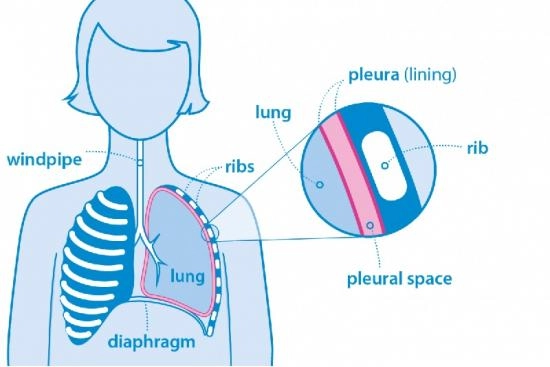Pleural mesothelioma (PM) is a rare and fatal cancer usually associated with past exposure to asbestos. The disease is characterized by an abnormal proliferation of cells that line the pleura, the membrane that surrounds the lungs. These cancerous cells rapidly invade adjacent tissues and can metastasize to distant sites.
Early diagnosis is essential for appropriate treatment, improving quality of life and extending life expectancy.









